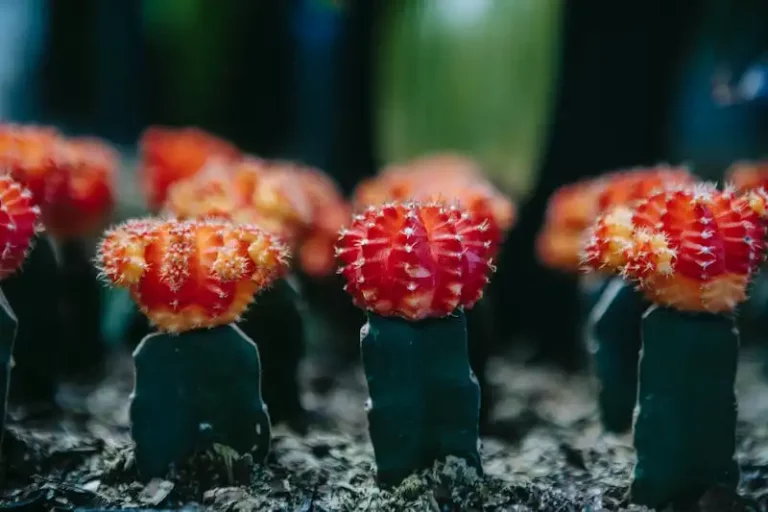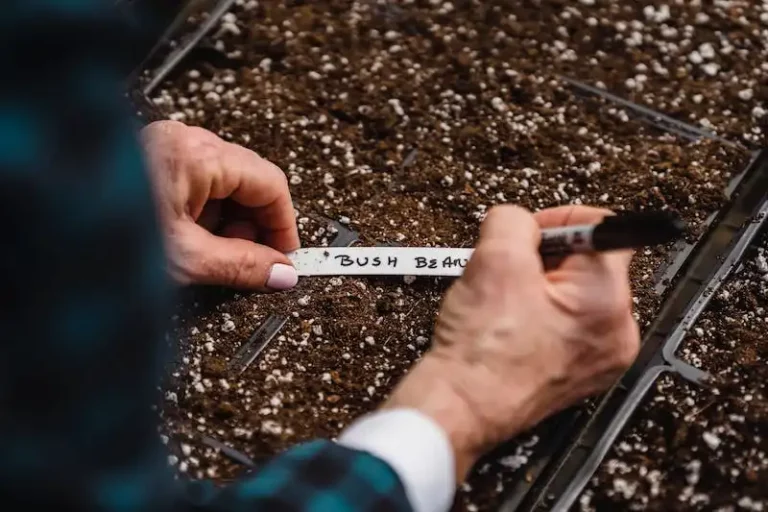Hardy hibiscus, commonly known as mallows or rosemallow, are show-stopping plants that are perfect for adding a statement to your garden. These stunning plants are typically grown for their beautiful blossoms and attractive foliage. Unlike their tropical counterparts, hardy hibiscus can withstand even the harshest winters and are perfect for areas where other hibiscus varieties struggle to survive.
Hardy hibiscus are native to central and southern parts of the United States, where they can be found growing in marshy areas. They can grow up to 6 feet in height and can spread to about the same width, making them ideal for larger gardens and landscapes. However, they can also be grown in containers, making them suitable for smaller spaces or for those who want to bring a pop of color to their patio or balcony.
These hardy hibiscus plants are known for their large, vibrant blossoms in colors ranging from red to pink to white. They bloom from mid-summer to fall and prefer full sun, although they can tolerate some shade. Hardy hibiscus are low-maintenance plants that require little care once established. They should be watered regularly, especially during hot and dry periods, and mulch can be added around the base of the plant to help retain moisture and suppress weeds.
Propagating hardy hibiscus can be done through a variety of methods, including seedlings, cuttings, and division. However, growing hardy hibiscus from seedlings or buying hybrids from a reliable nursery may be the easiest way to ensure you have the right plant for your garden. These plants prefer well-draining soil and can tolerate a range of soil types, although they prefer slightly acidic soils. In colder regions, some winter protection, such as a layer of mulch, may be necessary to help them survive.
Hardy hibiscus can also be used as companions in plantings, as their bold and colorful flowers can provide a striking contrast to other plants. They are also resistant to most pests and diseases, making them a cooperative addition to your garden. Whether you’re looking to add a pop of color to your garden or create a stunning focal point, hardy hibiscus plants are sure to impress.
“Luna Red’, ‘Luna Pink Swirl’, and ‘Luna White’ are some of the popular hardy hibiscus varieties that are known for their spectacular blooms.” – Joe Baldwin, Planting with Joe Blog
How to Plant and Grow Hardy Hibiscus
If you want to add a vibrant burst of color to your garden, look no further than hardy hibiscus. Known for their stunning blooms, these plants can easily thrive in a variety of conditions, making them a popular choice for gardens and landscapes.
When planting hardy hibiscus, it’s important to choose the right location. These plants prefer full sun to light shade, so find an area in your garden that receives at least six hours of direct sunlight per day. Avoid planting them in areas with excessive shade, as this can hinder their growth and flowering.
Before planting, make sure to prepare the soil. Hardy hibiscus prefers well-drained soil, so if your soil is heavy or clay-like, consider adding compost or organic matter to improve its drainage. You can also add a layer of mulch to help retain moisture and suppress weed growth.
When it comes to planting, follow these simple steps:
- Choose a planting location with the right amount of sunlight.
- Dig a hole that is twice the diameter of the root ball.
- Gently remove the plant from its container and loosen the roots.
- Place the plant in the hole, making sure it is at the same level as in the container.
- Backfill the hole with soil, gently tamping it down to remove any air pockets.
- Water thoroughly to settle the soil and provide moisture to the plant.
Once your hardy hibiscus is planted, it’s important to provide it with the right care to ensure optimal growth and blooming.
Watering is crucial for hardy hibiscus. These plants like slightly moist soil, so water them regularly, especially during dry periods. Be careful not to overwater, as this can damage the roots. It’s a good practice to water deeply, allowing the water to penetrate the soil and reach the roots.
Fertilizing is also important to keep your hardy hibiscus healthy. Apply a balanced fertilizer in early spring and again in late summer. Follow the instructions on the fertilizer package for the correct application rate. Avoid over-fertilizing, as this can cause excessive leaf growth and less flowering.
In terms of pruning, hardy hibiscus generally requires minimal pruning. If necessary, prune them in late winter or early spring to remove damaged or dead wood. You can also prune them to shape or control their size. However, avoid heavy pruning, as this can delay flowering.
Hardy hibiscus can be easily propagated via seed or stem cuttings. If you want to propagate your plants, collect the seeds in late summer. Sow them in containers and keep them indoors until they germinate. Stem cuttings can be taken in early spring and rooted in well-draining soil. Once rooted, they can be planted in the garden.
Hardy hibiscus can be a great companion plant in your garden. Consider planting them with other perennials like turtlehead (Chelone), strawberry pye weed (Eupatorium), and miscanthus. These plants can provide a beautiful backdrop and complement the vibrant blooms of hardy hibiscus.
In colder areas, hardy hibiscus may suffer damage from frost. To protect them during winter, you can mulch around the base of the plants to insulate the roots. You can also consider growing them in containers, so you can move them indoors when the temperatures drop.
In conclusion, planting and growing hardy hibiscus is relatively easy, and the rewards are endless. With their vibrant blooms and lush foliage, these plants will add beauty and color to your garden. Whether you’re a beginner or an experienced gardener, hardy hibiscus is a great choice.
Hardy Hibiscus Overview
Hardy Hibiscus, also known as Hibiscus moscheutos or Rose Mallow, is a fantastic plant that adds beauty and color to any garden. This perennial plant is native to areas in central and southern parts of the United States, where it thrives in the harshest of conditions.
The hardy hibiscus features large, showy blossoms that come in a wide range of colors, including pink, rose, white, and even varieties with striped or swirled patterns. The flowers can be as big as dinner plates and are a star attraction in any garden.
In early summer, the hardy hibiscus begins to bloom, and the flowers continue to appear until late fall. This extended blooming period makes it a standout in landscapes, providing endless color when many other plants have finished blooming.
The hardy hibiscus plant grows best in well-drained soil and prefers full sun but can tolerate some shade. It is always a good idea to plant it in a well-drained area and mulch around the plant to help retain moisture.
Hardy hibiscus is relatively easy to grow and requires little maintenance. It can be propagated by taking cuttings or by dividing mature plants. This allows gardeners to easily create more of these beautiful plants for their landscapes.
In colder areas, the hardy hibiscus can suffer from frost damage. To protect it during the winter, you can cut the plant back to the ground and mulch heavily around its base. This will help insulate the plant and prevent cold damage.
One of the great features of the hardy hibiscus is its attractive foliage. The leaves are deep green and often have a slight fuzziness to them. This adds an interesting texture to the plant and makes it visually appealing even when it is not in bloom.
Like all plants, hardy hibiscus can have its share of pests and problems. Some common issues include aphids, Japanese beetles, and leaf spot diseases. However, with proper care and attention, these problems can usually be managed without significant damage to the plant.
For those who enjoy gardening, hardy hibiscus is a must-have plant. Its large, showy blossoms and fantastic foliage make it a standout in any garden. So, if you want to add some color and beauty to your landscape, consider planting some hardy hibiscus.
Some tips for planting and caring for hardy hibiscus include:
1. Choose a well-drained location in your garden.
2. Always use well-drained soil.
3. Plant the hardy hibiscus in full sun or partial shade.
4. Mulch around the base of the plant to retain moisture.
5. Water the plant regularly, especially during dry periods.
6. Fertilize the plant with a balanced fertilizer in early spring.
7. Remove weeds and keep the area around the plant clean.
8. Cut the plant back in late winter or early spring to encourage new growth.
9. Prune any dead or damaged branches as needed.
By following these tips, you can enjoy the beauty of hardy hibiscus in your garden for years to come.
Where to Plant Hardy Hibiscus
Hardy Hibiscus, also known as Rose Mallow or Swamp Mallows, are remarkable plants with outstanding characteristics. They can tolerate a wide range of growing conditions and are well-suited for planting in various areas. If you’re looking for a plant that can thrive in high heat and humidity, full sun is the best choice for most Hardy Hibiscus varieties.
Hardy Hibiscus plants come in a variety of heights, ranging from 2 to 8 feet. When selecting a location for planting, consider the height of the specific variety you have chosen. If your plant is on the taller end of the spectrum, make sure it won’t overshadow other plants or obstruct any views. On the other hand, if you prefer a shorter plant, choose a spot where it won’t get lost among taller surrounding plants.
Hardy Hibiscus plants are known for their vibrant blooming. To ensure robust blooming, select a location with well-drained soil and ample sunlight. While they can tolerate partial shade, they will produce the most blossoms in full sun. In areas with hot summers, some afternoon shade can help protect them from excessive heat stress.
Hardy Hibiscus is a water-loving plant. It thrives in moist soil and appreciates consistent watering. During periods of drought, make sure to keep your hibiscus well-watered to prevent stress and ensure continuous blooming. Mulching around the plant can help retain moisture in the soil.
Although Hardy Hibiscus can tolerate a certain amount of neglect, they still benefit from regular fertilization. Use a high-nitrogen fertilizer in early spring to support healthy growth and profuse blooming. However, be cautious not to over-fertilize, as it may result in excessive leaf production instead of flowers.
If you want to incorporate Hardy Hibiscus into your garden but still want to attract deer or turtlehead, consider planting them near Miscanthus or other tall grasses. These plants provide shade and cover for the Hardy Hibiscus, helping to create a more appealing environment for wildlife while still allowing the hibiscus to receive adequate sunlight.
You can find Hardy Hibiscus plants through commercial catalogs or by growing them from seed. If you choose to grow from seed, start them indoors about six to eight weeks before the last frost date. Once they reach a suitable size, transplant them into your garden. Alternatively, you can also propagate Hardy Hibiscus via cuttings.
In conclusion, Hardy Hibiscus is a versatile plant that can be successfully grown in various locations and conditions. With their vibrant flowers, cooperative nature, and tolerance for a wide range of environments, they make great additions to gardens or landscapes. Whether you want to plant them in full sun, partial shade, or near other plants, Hardy Hibiscus will bring beauty and success without much hassle.
Notes: Hardy Hibiscus varieties include Hibiscus moscheutos, Hibiscus makinoi, and Hibiscus rosa-sinensis. Some popular hybrids are ‘Blue River II’, ‘Lord Baltimore’, ‘Disco Belle’, and ‘Swirl’.
Source: https://www.thespruce.com/how-to-grow-hardy-hibiscus-5078159




